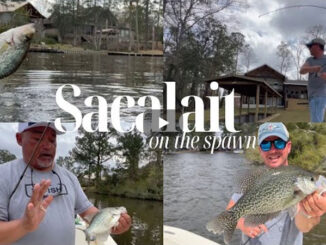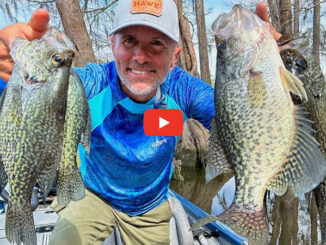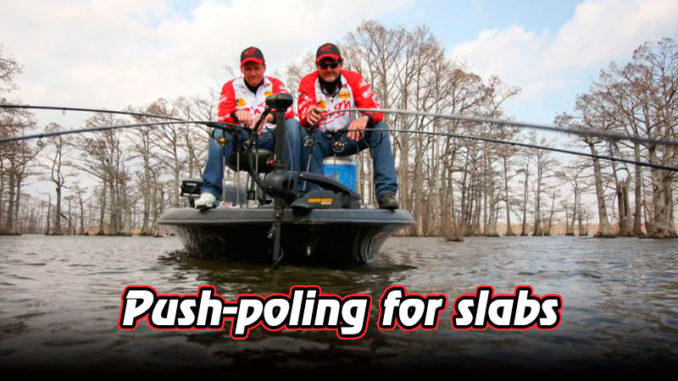
With the advent of today’s electronics, this national champion crappie angler says old-fashioned spider-rigging is a thing of the past. Now that he can see underwater structure — he pushes his lure right where it needs to be.
Hearing Ronnie Capps’ voice cringe at the mere mention of the term “spider rig” made me think he had an acute case of arachnophobia.
It didn’t seem like something one of the most successful crappie tournament anglers in the world would react to so negatively.
“I hate the term,” Capps warned, as if he didn’t want to hear me say it again.
“It’s something we did 15 or 20 years ago, but ‘spider rig’ is not a really good defining term for what we do today, in my opinion. I guess back then it was a reasonable term since a spider has eight legs and we had eight poles sticking out the front — and sometimes eight out the back.”
Capps explained that he and his longtime tournament partner Steve Coleman used to use so many poles with jigs or minnows set at so many different depths because they were essentially fishing blind.
“That’s how we found underwater structure that would hold crappie,” he said. “Now we have such great technology at our fingertips, and that has changed everything.
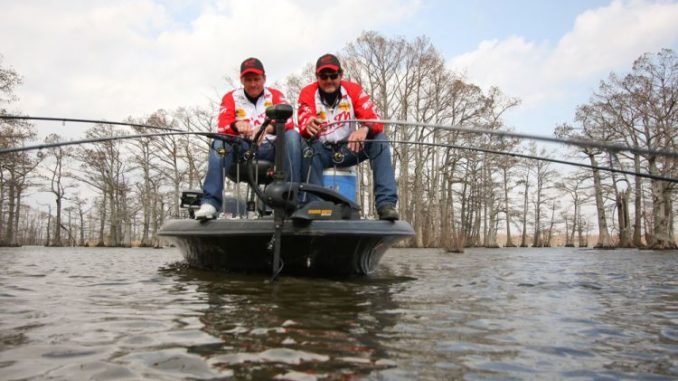
“Instead of four poles out of each side at the front, we’re down to four total — two on each side. Go ahead if you want to call it spider rigging, but that’s not what it is anymore.”
Direct structure fishing
Capps, who was talking with me as he was getting ready to fish an American Crappie Trail tournament on the Ouachita River out of West Monroe, kept calling what he does today direct structure fishing.
It’s direct because he no longer haphazardly has to search for crappie structure with up to 16 poles sticking out of his boat. He relies on his electronics to put his baits right where they need to be.
“Using my Humminbird 360 Imaging, I no longer have to guess where a stump is because I can see it clearly on my screen,” Capps said. “Not only can I see the structure, I can clearly see crappie on that structure… even see what side of the stump they’re on.”
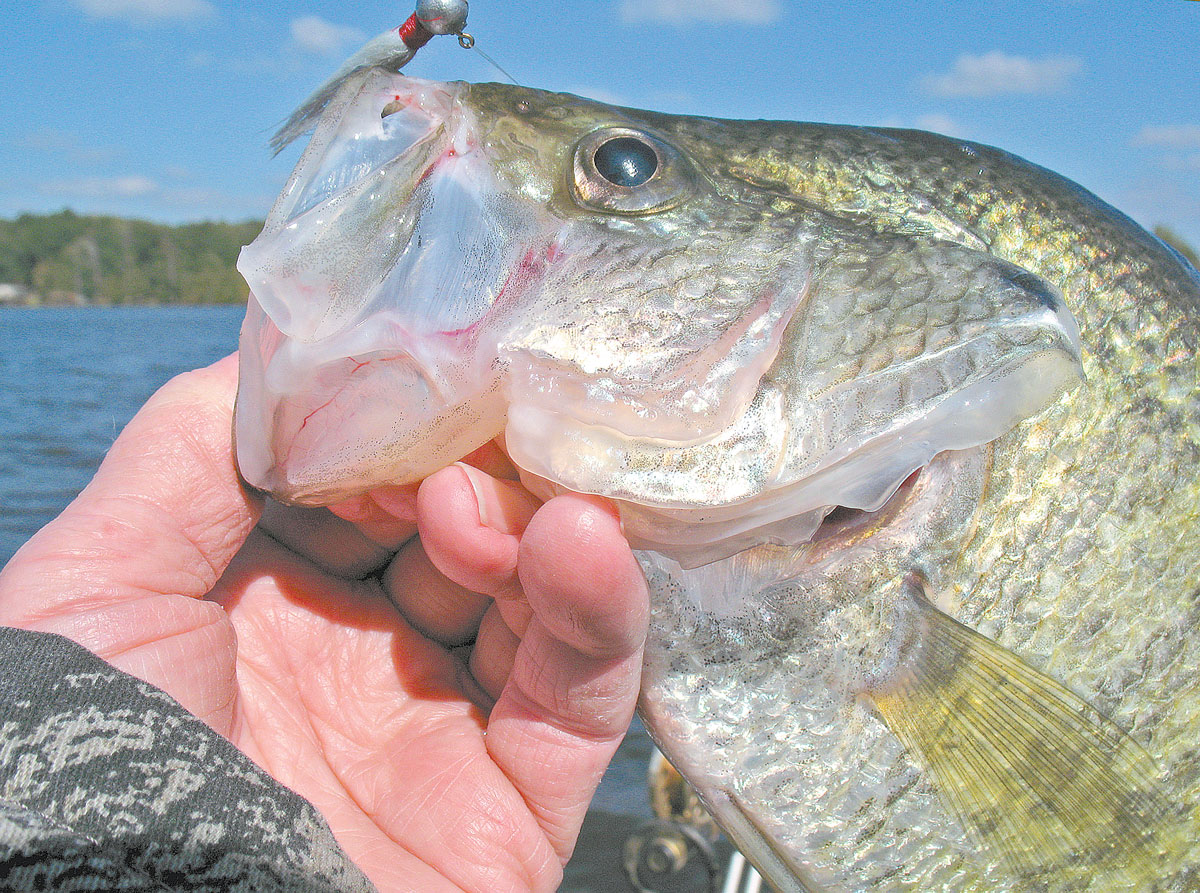
Capps says he still puts his poles in holders like he used to, but he doesn’t have so many sticking out of his boat that are wasting time.
“Fishing structure directly like this, I can tell you exactly when a fish is about to bite and which rod he’s about to bite because I’m directly looking at the fish on the stump and my bait in the water.”
Pushing poles
Once he’s identified productive structure with his electronics, Capps uses his Ranger boat as his arm to control the four poles he has sticking out from the bow.
“We’ve got our four rods out front, and I’m controlling the boat in such a fashion to ease it right into the structure all the while looking at my Humminbird,” Capps said. “By pushing them out front, I can tell exactly when my baits get to the stump. We generally put two baits on each side of a stump, hold the boat as still as we can, catch the fish, then get out and go to the next stump.”

Depending on the depth of the water, Capps may try to get in a closer to the structure, or he may decide to stay back a little. He doesn’t like to get too close in shallow water, but if he’s got about 12 feet, he feels comfortable getting just about right over the structure if he has to.
“A 12-foot pole is great for pushing baits into structure,” Capps said. “I don’t like to use anything over 14 feet because I want to make sure that stump, the fish and my bait all fit within the cone angle for my Humminbird so I can see everything that’s going on.”
Keeping it still
If there is any trick to direct fishing structure by pushing baits straight to it, Capps said it’s keeping his baits as still as possible.
After watching fish in aquariums, he has come to the conclusion that motion will usually put them in a state of suspense for a while until they can be sure everything is OK.
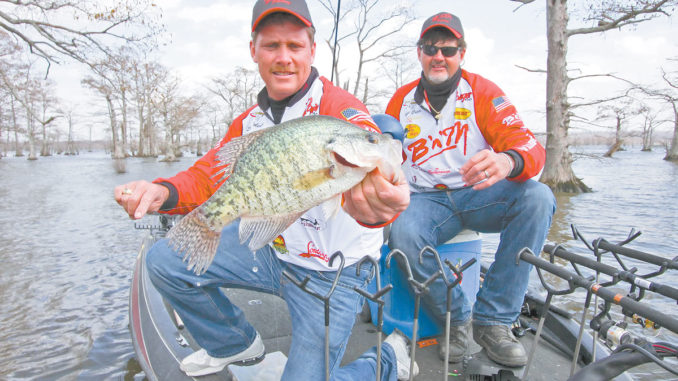
“Even if that fish is hungry,” he said. “I’ve messed with them a long time, and I’ve taken it to the lake, and I’ll stand by that until I figure out different.
“The truth is that I’ve carried more big, smart fish to the weigh-in by having completely motionless baits other than a minnow. And even then I’ll have everything else motionless while I let him do his thing.”
Capps is so adamant about being as still as possible that he does whatever he can to make his boat as heavy as possible to prevent it from bouncing around in a chop.
“I’ve reversed water flow in my livewell,” he said. “I’ve carried extra lower units… anything that will help me sit still in wave activity. I try to tone down any kind of noise and bounce on the front to keep the rods as still as possible so my baits stay as still as possible.
“I know people with a different attitude than me, but keeping it still works for me.”
Room for adjustment
While he was getting ready to fish the Ouachita River, Capps figured out that he wouldn’t be fishing big stumps like he might at Ross Barnett, or Grenada in Mississippi.
He discovered during pre-fishing that he and Coleman would be fishing hundreds of tiny stumps no bigger than Coke bottles — rather than one isolated stump.
“That’s heavy cover,” he said. “And the crappie are in all those stumps. I’ve never seen so many gar as I have on the Ouachita, and I’m assuming the crappie are hiding in those stumps to stay away from the gar.”
Because he was faced with the prospect of fishing so many different small stumps at the same time, Capps admitted that he might be better off using eight rods instead of four.
“You can bet each pole is going to be pushing a single 1/16-ounce jig with 6-pound line to cover huge areas of these stumps,” Capps added. “These stumps are basically young cypress trees that must have started to grow then got flooded and died out. I don’t know the history of what happened, but I do know the big fish are in them. The thicker the structure here, the nicer the fish.”
Murky water
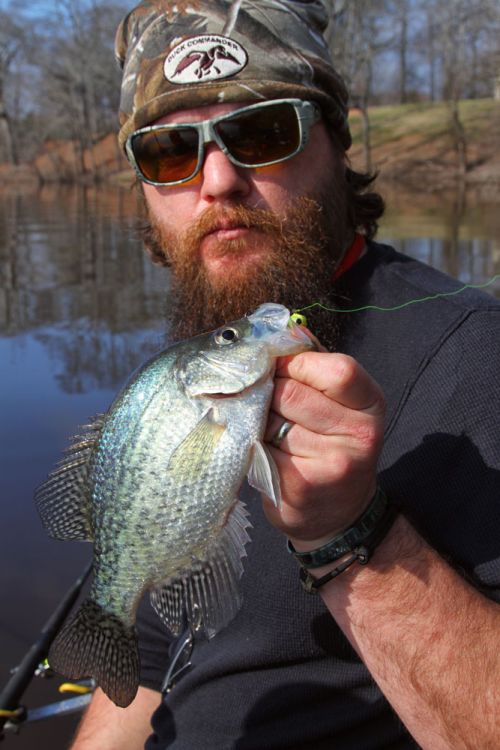
If traditional spider rigging still has a place among crappie anglers, Capps said it was in murky water where fish have a tendency to suspend in open water.
“If you want to spider rig, that’s the time to do it because fish could be anywhere,” he said. “I’d put out a big pole set at that point, with rods up to 20 feet long to cover a lot of real estate to put a hook in front of more fish.”
When talking about direct structure fishing, Capps said it was important to have water with more visibility. Being sunfish, that makes crappie want to relate to cover.
Watch the water color
“Water color is the number one thing I look at when I go to a new body of water,” he said. “What I’ve found here on the Ouachita River is that the different river lakes can have completely different water color. Some have that black-red water. Some have clear black water. And some have been stained up, maybe from algae or something.”
Although the water color wasn’t murky enough to make him abandon his direct structure fishing technique, Capps did notice that whatever color jig that was working in one lake went totally ignored in another.
“In one lake in particular they were eating a blue chrome Bobby Garland Baby Shad with a silver bottom,” he said. “Then I went to another lake that was a little more stained and full of carp and gar, and I had to switch to straight chartreuse. Water color makes a huge difference in how you fish, and what you fish.”

So it’s not that Capps has a irrational fear of spiders, it’s just that he’s figured out how to fine tune an old technique of yesterday to make it more effective for a more modern today.
Let’s face it, fishing with 8 to 16 poles might have been the thing to do before you could accurately tell what was below the surface. But now that you can see the bottom and the fish in near HD quality, spider rigging seems to be more overkill than necessity.
Maybe we should just call it push-poling.
Louisiana crappie fishing getting national attention
Having fished crappie tournaments all over the nation, Ronnie Capps has seen more energy for the professional side of crappie fishing the last couple of years than he has ever seen in his entire 30-year fishing career.
“More people are showing up to watch the weigh-ins, and more people are showing up to fish the tournaments,” Capps said. “I’ve seen guys I fished with in high school and who have always crappie fished now entering these tournaments.”
Capps attributes much of this surge in interest to the American Crappie Trail and its expansion into more bodies of waters than just the old typical crappie lakes across America.
“Take the Ouachita River for example,” Capps said. “This river is a treasure for the state without a doubt, and now we’re going to get to showcase what kind of crappie fishing it has. Having lived at Reelfoot in Tennessee and fishing the Mississippi River for as long as I can remember, I consider the Ouachita River a mini version of the Mississippi. It’s the same kind of stuff, just not as wide or as long.”

